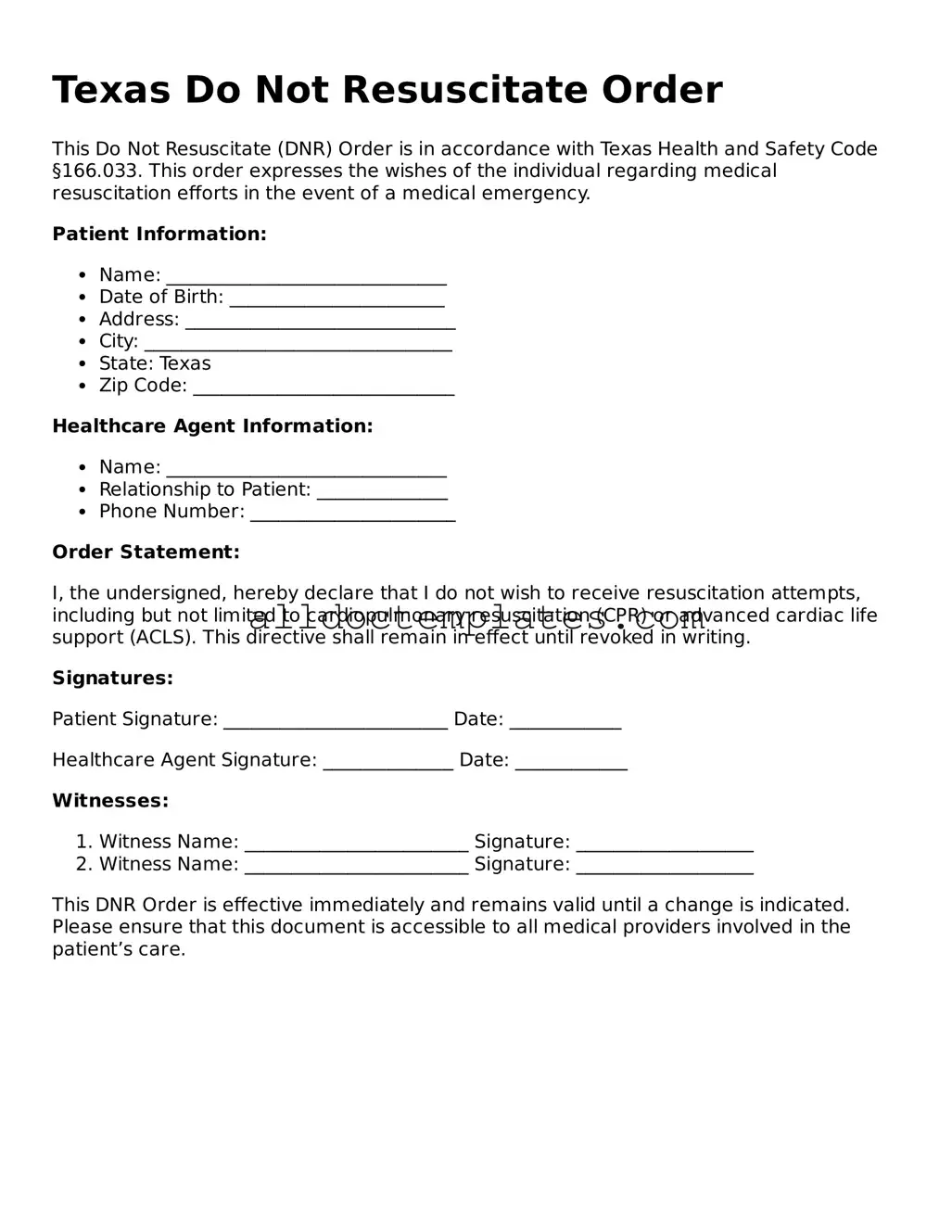Texas Do Not Resuscitate Order
This Do Not Resuscitate (DNR) Order is in accordance with Texas Health and Safety Code §166.033. This order expresses the wishes of the individual regarding medical resuscitation efforts in the event of a medical emergency.
Patient Information:
- Name: ______________________________
- Date of Birth: _______________________
- Address: _____________________________
- City: _________________________________
- State: Texas
- Zip Code: ____________________________
Healthcare Agent Information:
- Name: ______________________________
- Relationship to Patient: ______________
- Phone Number: ______________________
Order Statement:
I, the undersigned, hereby declare that I do not wish to receive resuscitation attempts, including but not limited to cardiopulmonary resuscitation (CPR) or advanced cardiac life support (ACLS). This directive shall remain in effect until revoked in writing.
Signatures:
Patient Signature: ________________________ Date: ____________
Healthcare Agent Signature: ______________ Date: ____________
Witnesses:
- Witness Name: ________________________ Signature: ___________________
- Witness Name: ________________________ Signature: ___________________
This DNR Order is effective immediately and remains valid until a change is indicated. Please ensure that this document is accessible to all medical providers involved in the patient’s care.
